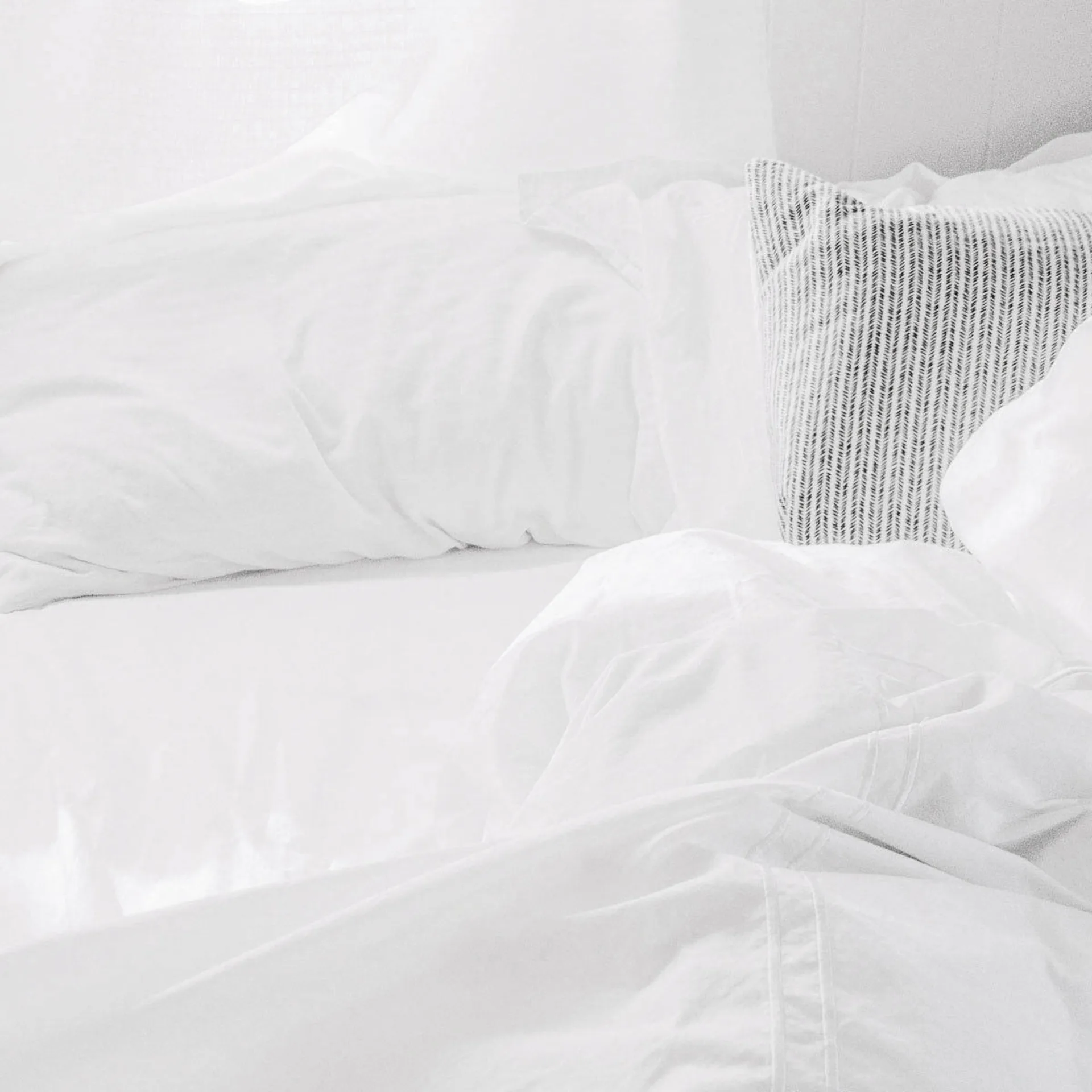How Many Calories Do You Burn Sitting? What I Wish I’d Known Sooner
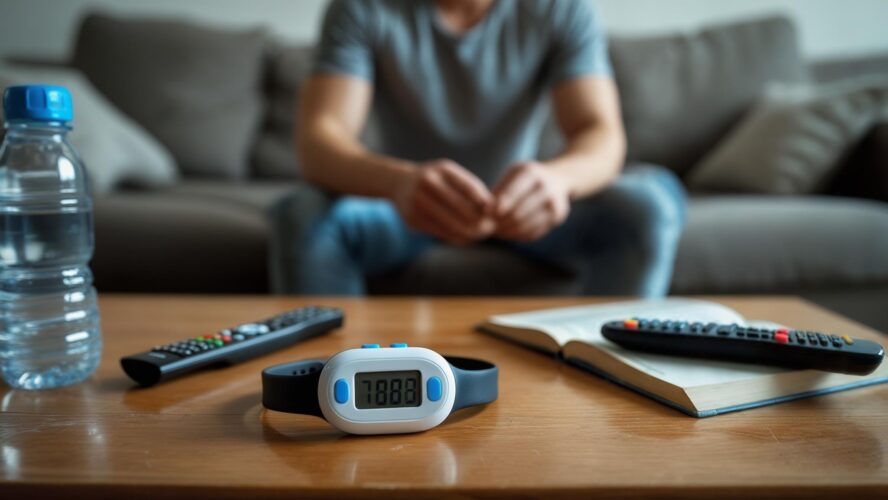
I used to think sitting at my desk all day meant my metabolism basically shut off. Turns out, I was totally wrong. Your body is actually doing way more work than you’d think, even when you’re just parked in a chair scrolling through emails. Your brain alone is burning through 20% of your daily calories, and here’s the crazy part – things like stress, temperature, and even that fidgeting habit you feel guilty about can completely change how much energy you’re torching during those long desk sessions.
Here’s something that blew my mind: the difference between sitting quietly and sitting with light fidgeting is actually pretty significant. A 180-pound person burns approximately 112 calories per hour when fidgeting their hands while sitting, compared to baseline sitting rates. According to Captain Calculator, a person weighing 180 pounds (81.65kg) who sits quietly fidgeting hands (MET value of 1.3) burns 112 calories per hour, demonstrating how small movements can meaningfully impact metabolic rate during sedentary periods.
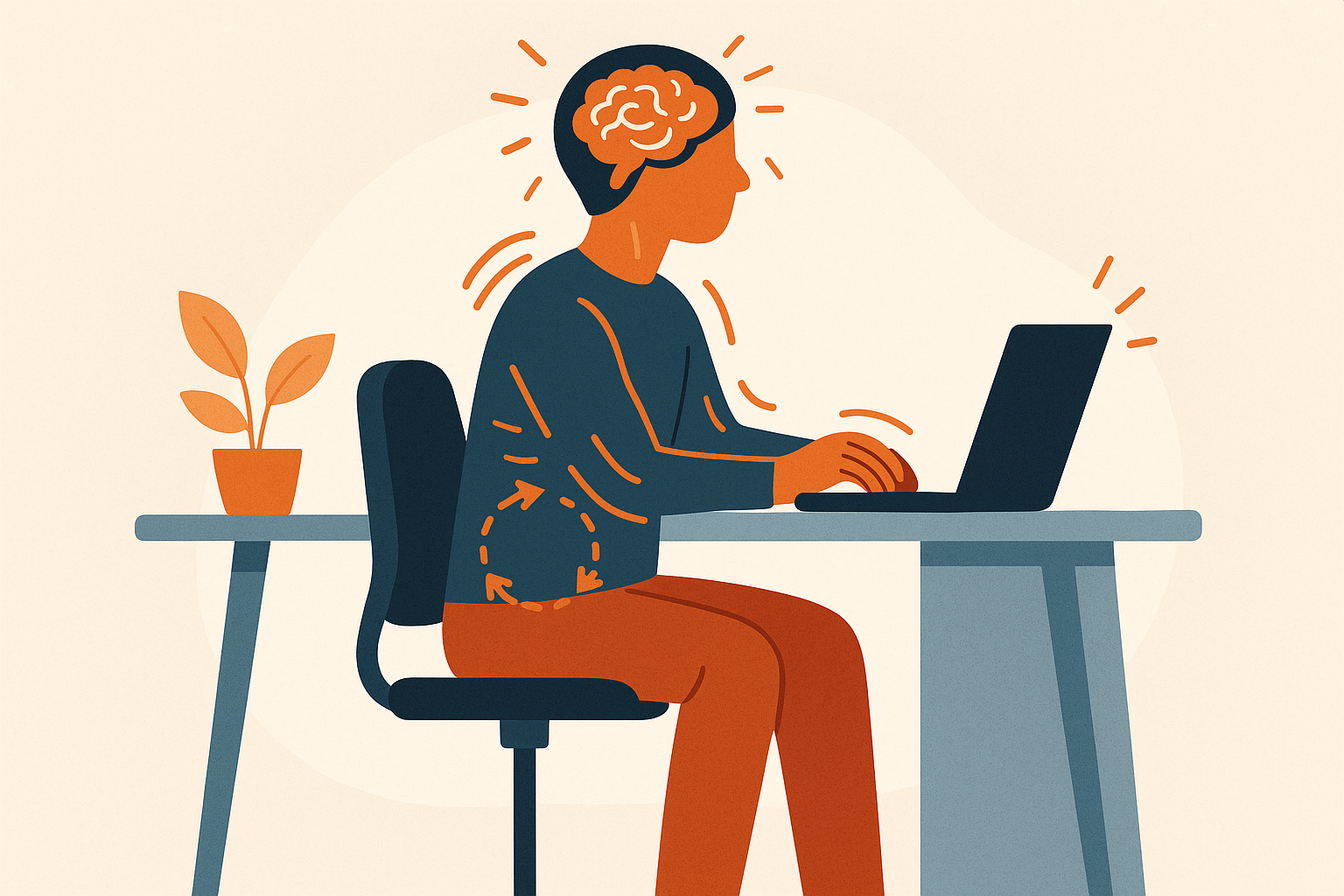
Table of Contents
- What’s Really Happening in Your Body While You Sit
- The Fidgeting Factor: Why Some Lucky People Burn 800 More Calories Daily
- How Your Office Environment Is Secretly Messing With Your Metabolism
- Simple Ways to Turn Your Chair Into a Calorie-Burning Machine
TL;DR
- Your brain is basically doing CrossFit while you sit there – burning 20% of your daily calories, with mental tasks boosting this by 15-25%
- Those people who can’t sit still? They might be burning 800 more calories a day than the rest of us (I know, it seems unfair)
- Your office temperature, lighting, and air quality are quietly controlling your metabolic rate in ways you’d never expect
- Simple breathing tricks can bump up your sitting calorie burn by 5-15%
- Chilly environments (below 72°F) can boost daily calorie burn by 100-300 calories just through your body working to stay warm
- Your sitting metabolism isn’t constant – it actually peaks in the morning and early evening
What’s Really Happening in Your Body While You Sit
While you’re sitting there reading this, your brain is orchestrating something pretty incredible that most of us never think about. Despite weighing only 2% of your body weight, your brain is hogging a massive 20% of your daily calories. This creates some interesting calorie-burning patterns that change based on what you’re thinking about, how stressed you are, and even what time of day it is.
Understanding how many calories do you burn sitting connects to bigger picture health stuff, including mental fitness strategies that can help you make the most of your brain’s energy use during those long desk sessions.
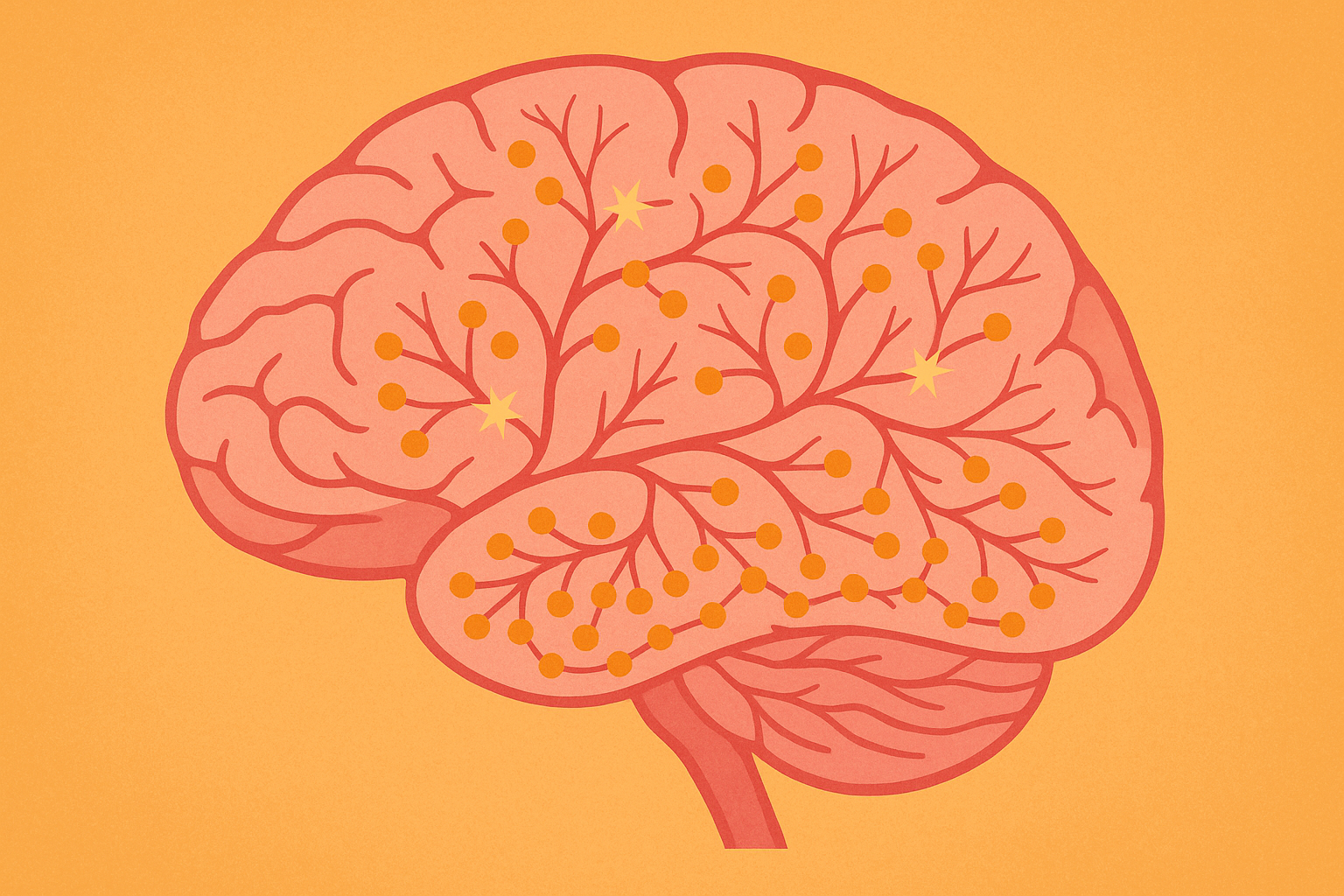
The Mental Workout You Didn’t Know You Were Getting
You know that feeling when you’re deep in a challenging project and suddenly realize you’re starving? That’s your brain literally burning through calories. Every time you tackle something mentally demanding while sitting, you’re actually giving your metabolism a real boost. Mental tasks can increase your calorie burn by 15-25% above your baseline, which adds up to measurable differences in daily energy expenditure.
Sarah, a software developer, noticed that during her most challenging coding sessions, she felt hungrier and more wiped out than during routine tasks. This makes total sense – her brain was consuming 25% more glucose during complex problem-solving phases, burning an additional 50-75 calories per hour compared to simple data entry work.
When Your Brain Goes Into Overdrive
Here’s what surprised me most: decision-making, problem-solving, and creative thinking actually trigger increased glucose uptake in your prefrontal cortex, cranking up your metabolic rate even while you’re physically motionless. The harder you think, the more calories you burn – it really is that simple.
Stress: Your Metabolism’s Complicated Relationship
Work pressure and emotional stress can temporarily boost your sitting metabolism by 10-15% through cortisol and adrenaline responses. But here’s the catch – chronic stress eventually kills this effect, which is why managing stress matters way more than most people realize for keeping your metabolism humming.
Just like where your body stores tension can reveal emotional patterns, your stress-induced metabolic changes while sitting can show you deeper wellness stuff that needs attention.
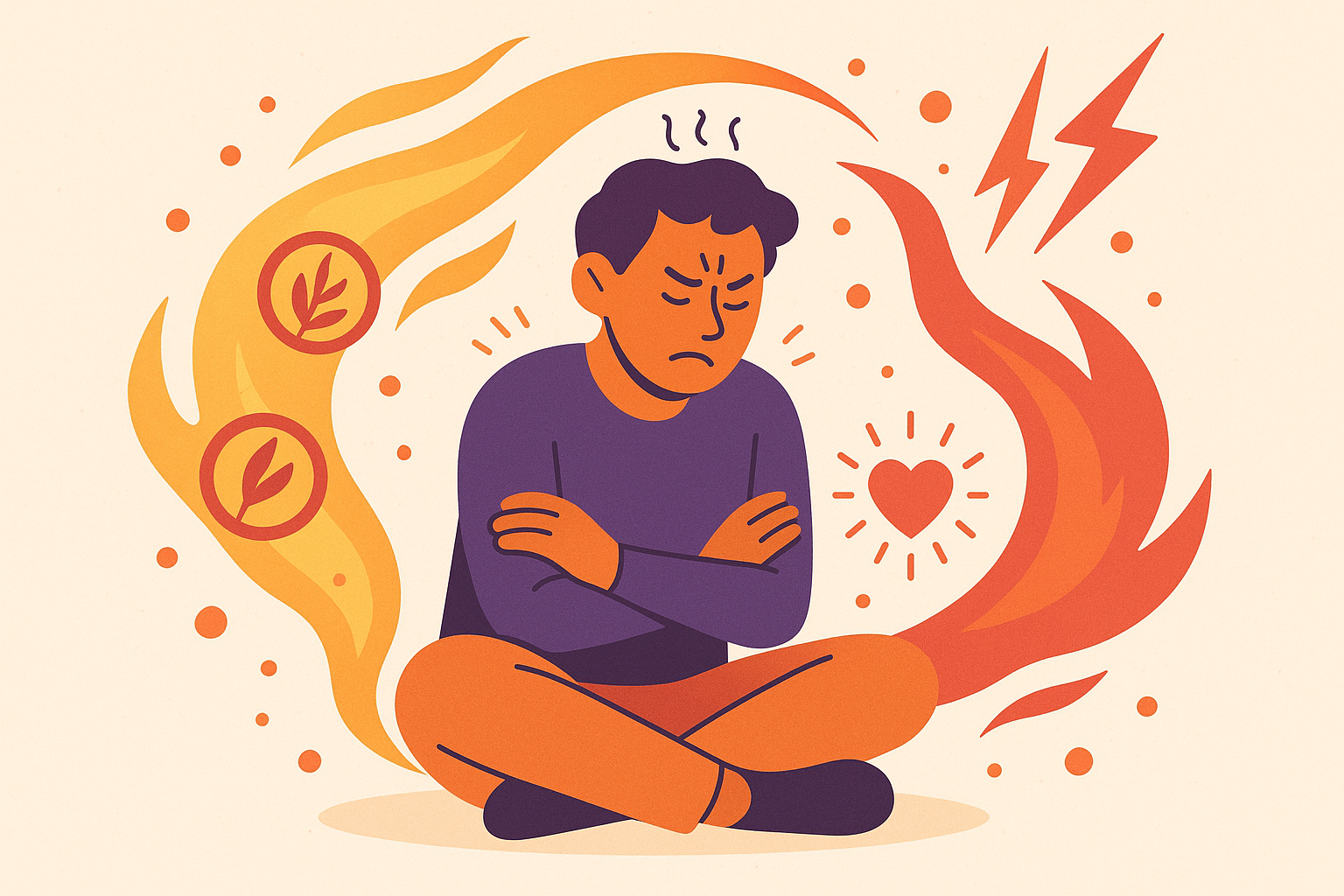
The Hidden Cost of Screen Time
Your brain works overtime to process blue light and keep you focused on screens, requiring extra energy for visual processing and keeping your posture from completely falling apart. This digital eye strain compensation adds to your daily calorie burn in ways most of us never think about.
Your Body’s Internal Clock Controls Everything
Here’s something cool: your metabolic rate while sitting isn’t the same all day long – it actually goes up and down in pretty predictable patterns tied to your natural body clock. Understanding these peaks and valleys can help you figure out when to tackle brain-heavy tasks for maximum calorie burn.
| Time of Day | Metabolic Rate | Cognitive Performance | What to Do |
|---|---|---|---|
| 6-9 AM | Highest (+12%) | Peak alertness | Tackle the hard stuff |
| 9-12 PM | High (+8%) | Good focus | Creative work |
| 12-3 PM | Lowest (-5%) | Post-lunch crash | Mindless tasks |
| 3-6 PM | Moderate (+3%) | Getting back in the game | Admin work |
| 6-9 PM | High (+7%) | Second wind | Planning and strategy |
Morning: Your Metabolic Sweet Spot
The natural cortisol spike when you wake up bumps your sitting metabolism by 8-12% in the first 2-3 hours after getting up. This means morning desk work is actually more metabolically active than doing the same stuff later in the day.
The Afternoon Crash Is Real
That natural energy dip between 1-3 PM? It drops your sitting metabolic rate to its lowest daily point. This explains why you feel like garbage after lunch – your body is literally burning fewer calories during this period.
Temperature Regulation: Your Body’s Quiet Work
Even while sitting perfectly still, your body is constantly working to keep your core temperature at 98.6°F. This temperature regulation burns significant energy through blood flow adjustments, tiny muscle contractions, and cellular processes that most people never consider.
Cold Exposure: Nature’s Metabolic Hack
Sitting in temperatures below 72°F gets your brown fat working and increases those tiny muscle contractions throughout your body. This cold-induced calorie burning can boost your daily burn by 100-300 calories without you having to think about it.
The benefits of cold exposure while sitting are similar to what you get from cold shower health benefits, where controlled temperature stress triggers metabolic improvements that last all day.
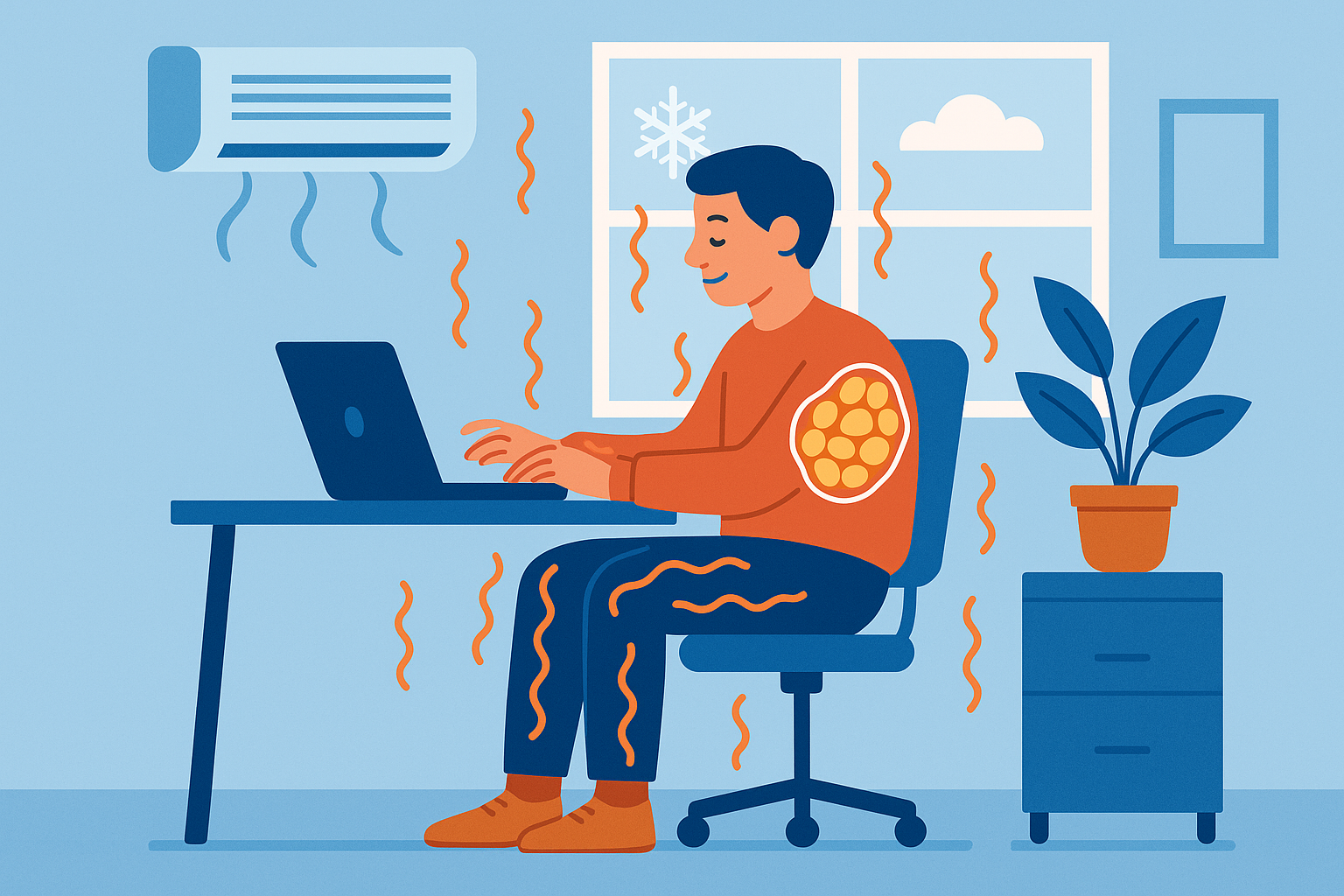
The Fidgeting Factor: Why Some Lucky People Burn 800 More Calories Daily
Here’s something that might make you feel better about being the person who can’t sit still: those unconscious movements, fidgets, and posture shifts you barely notice can create huge differences in sitting metabolism. Some people are basically genetic lottery winners when it comes to natural movement patterns that burn way more calories.
Recent research from Harper’s Bazaar backs this up: “fidgeting throughout the entire day can burn ten times more calories than just sitting still; one study from 2005 clocked the number at 350 calories per day, enough to lose 30 to 40 pounds in one year.”
The Secret Life of Unconscious Movement
Those unconscious fidgets, posture shifts, and muscle tension changes you barely notice? They create substantial differences between people in sitting metabolism. Some folks just naturally move in ways that burn significantly more calories, and honestly, it seems kind of unfair.
Research from Wellable shows that participants burned about 20 calories while sitting for 15 minutes, regardless of what they were doing, while standing only burned an extra two calories per 15 minutes compared to sitting down. So the difference between sitting and standing isn’t as dramatic as people think.
Born to Fidget: The Genetic Advantage
Genetic variations in dopamine and norepinephrine receptors influence fidgeting behavior at the cellular level. Some people naturally burn 150-350 additional calories daily through unconscious movement patterns they inherited from their parents. Like I said – genetic lottery.

Breathing: Your Most Underrated Metabolic Tool
This might sound weird, but conscious breathing techniques can increase your sitting metabolic rate by 5-15% while also helping with stress and mental clarity. This makes controlled breathing one of the most practical things desk workers can do to boost daily calorie burn.
The power of intentional breathing while sitting builds on yoga breathing techniques that can elevate your metabolic state even when you’re just sitting around.
Deep Breathing = More Calorie Burn
Deep breathing from your diaphragm activates your core muscles and increases oxygen consumption, creating a measurable metabolic boost that adds up throughout the day. The deeper you breathe, the more energy your body uses – it’s that straightforward.
Mark, an accountant, started doing 5-minute deep breathing sessions every hour during tax season. He felt less stressed and noticed way more energy throughout the day. His deeper breathing patterns were activating his core muscles and increasing oxygen consumption, burning an estimated 15-20 additional calories per hour compared to his previous shallow breathing habits.
The Box Breathing Hack
Structured breathing patterns using a 4-4-4-4 count (inhale for 4, hold for 4, exhale for 4, hold for 4) engage your relaxation response while maintaining elevated metabolic activity through controlled muscle engagement. You get the best of both worlds – less stress and more calorie burn.
How Your Office Environment Is Secretly Messing With Your Metabolism
Your workspace environment has way more impact on how many calories you burn while sitting than most people realize. Things like temperature, air quality, and lighting can increase or decrease your metabolic rate by significant amounts without you even knowing it’s happening.
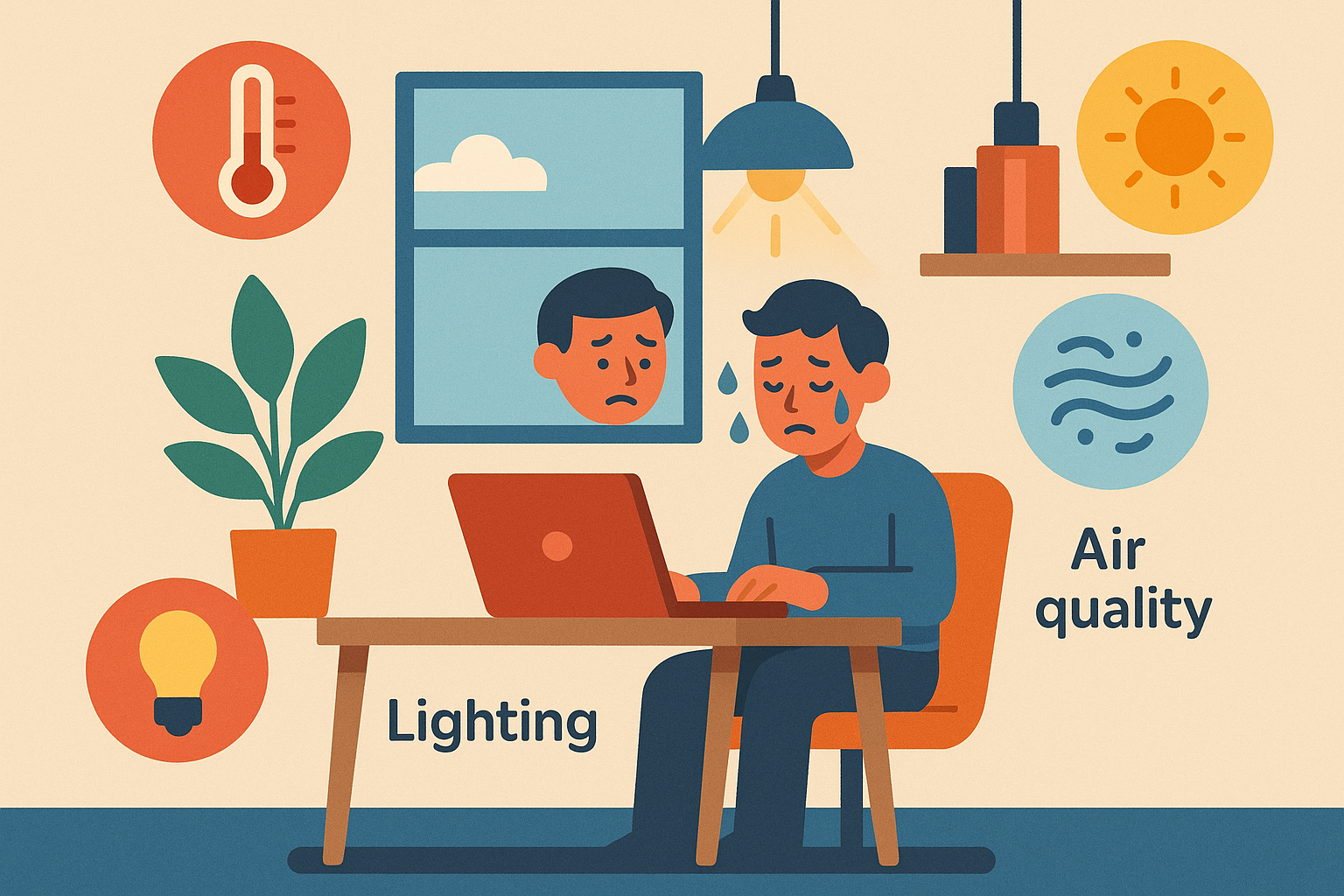
Light Exposure: More Than Just Mood
The type and intensity of light you’re exposed to while sitting affects your melatonin production, cortisol patterns, and overall metabolic efficiency. Natural light exposure can increase your sitting metabolic rate by 6-10% compared to those awful fluorescent lights alone.
Blue Light: The Metabolic Troublemaker
Extended blue light exposure from screens messes with your natural metabolic rhythms and can reduce your sitting calorie burn by 5-8% while simultaneously making you hungrier. It’s a double hit that adds up over time.
Getting Strategic About Light
Using bright light therapy (10,000 lux) during morning sitting periods can optimize your metabolic function and increase daily energy expenditure. This isn’t just about seasonal depression – it’s about metabolic performance.
According to Only My Health, “You have a higher oxygen consumption and carbon dioxide production when you stand upright and straight, with your shoulders pulled back and your stomach pulled in while engaging your core. This leads to an increased number of calories burned per minute due to the engagement of postural muscles.”
Light therapy for metabolic enhancement works similarly to red light therapy for seasonal depression, where targeted light exposure can improve both mood and metabolic function during those long sitting sessions.
Air Quality: The Invisible Factor
Poor air quality reduces how efficiently your cells use oxygen, potentially decreasing your sitting metabolic rate by 3-7% in poorly ventilated spaces with high CO2 concentrations. The air you breathe directly impacts how efficiently you burn calories.
Why Ventilation Actually Matters
Good air circulation maintains optimal oxygen-carbon dioxide ratios in your workspace, supporting efficient cellular respiration and maximizing calorie burn during sedentary periods. Fresh air isn’t just refreshing – it’s metabolically essential.
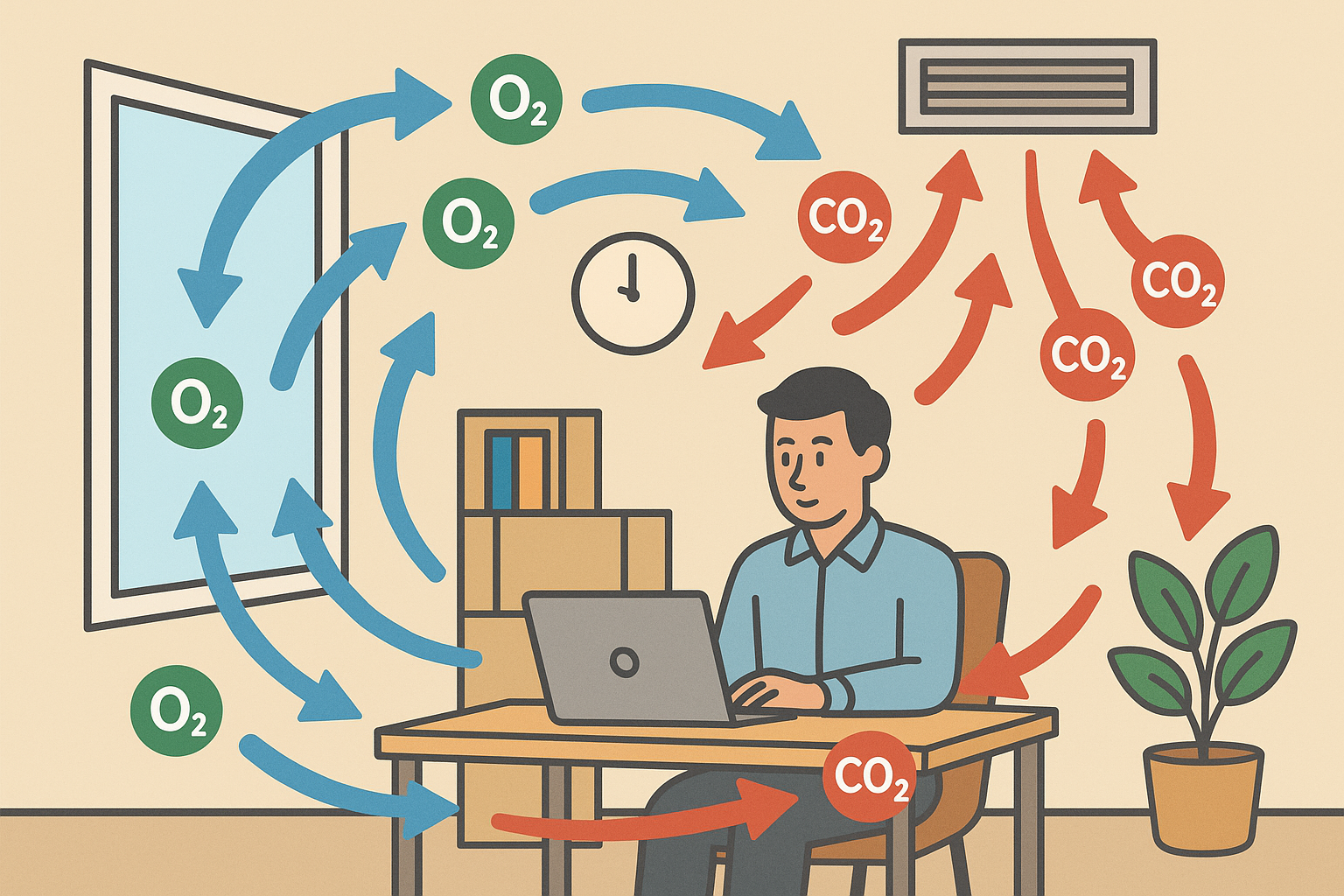
Finding Your Temperature Sweet Spot
The metabolic “sweet spot” for sitting happens around 68-70°F, where your body maintains optimal efficiency without wasting energy on temperature regulation. But here’s where it gets interesting – you can strategically manipulate temperature to boost your calorie burn.
Research from BTOD shows that “standing to burn more calories than sitting since it is a slightly more intense activity. Although calorie calculators may give different values for the calories burned in each position, they consistently show a 20 – 50 calorie per hour increase for standing depending on your body mass.”
The Cool Truth About Calorie Burning
Slightly cooler environments (65-68°F) can increase your sitting metabolism by 50-150 calories daily through enhanced thermogenesis without making you uncomfortable. Your body works harder to maintain temperature, burning more calories in the process.
Clothing Strategy for Metabolic Advantage
Strategic layering lets you fine-tune your thermal environment, enabling you to leverage temperature-induced metabolic increases while staying productive and comfortable throughout your workday. Finally, a reason to feel good about being the person who’s always adjusting the thermostat.
Simple Ways to Turn Your Chair Into a Calorie-Burning Machine
Look, I’m not going to give you some complicated 47-step program. The key to making sitting more metabolically active is starting with small changes that build into significant improvements over time without messing up your productivity.
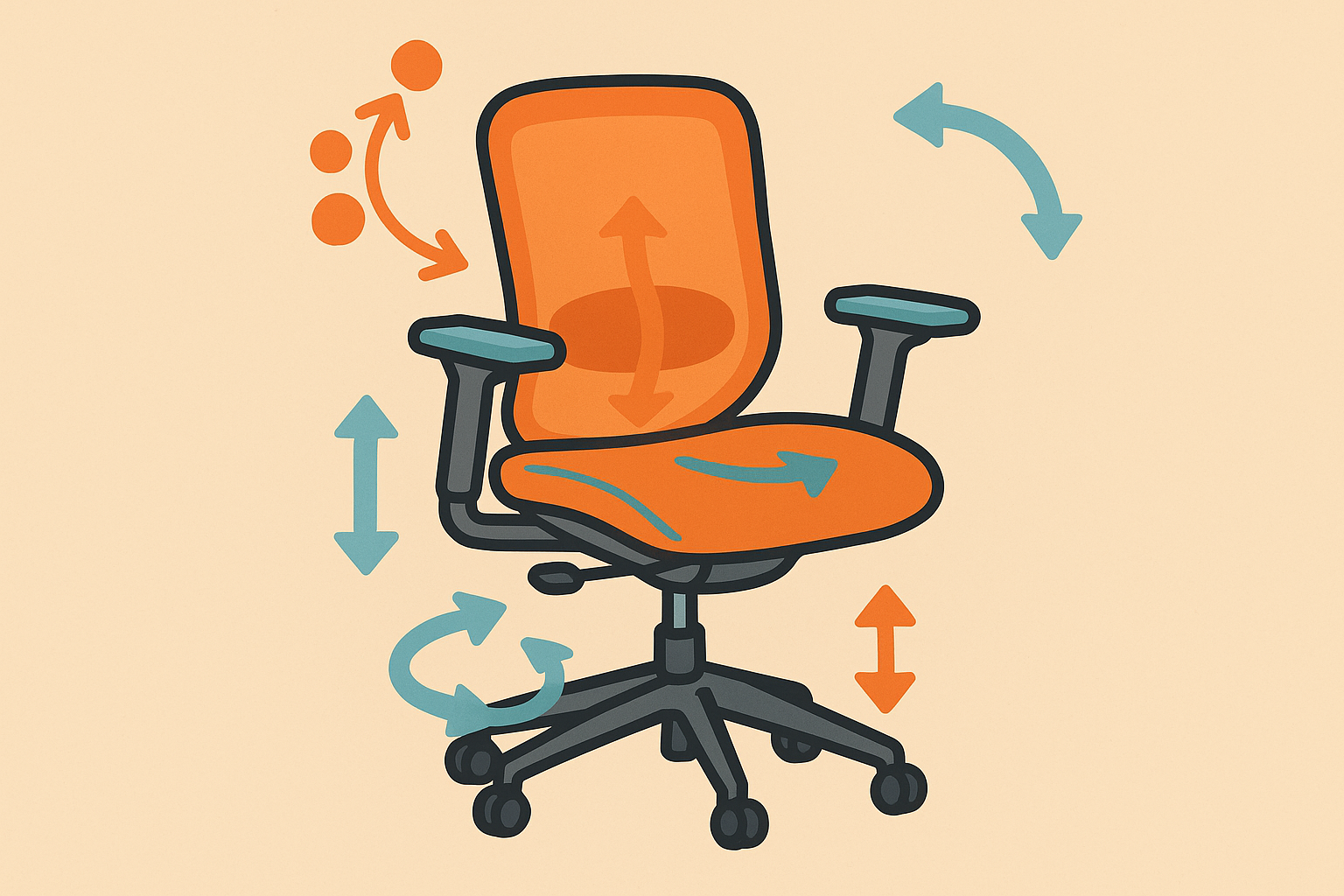
Figure Out Your Current Reality
Before you can optimize anything, you need to understand what’s actually happening with your metabolism right now. Getting a realistic picture of your current calorie burn while sitting gives you a foundation for identifying what changes will make the biggest difference.
Your Personal Sitting Metabolic Rate
Using the Harris-Benedict equation adjusted for sitting-specific factors gives you a realistic estimate of your actual calorie burn. The formula: BMR × 1.2 × cognitive load factor × environmental modifiers reveals what’s really going on.
Okay, let’s break this down in real numbers (because I’m a data nerd and you probably want to know):
| Body Weight | Just Sitting (cal/hr) | With Fidgeting (cal/hr) | Chilly Office (cal/hr) | Brain Work (cal/hr) |
|---|---|---|---|---|
| 120 lbs | 65 | 78 | 85 | 91 |
| 150 lbs | 81 | 97 | 106 | 114 |
| 180 lbs | 97 | 116 | 127 | 136 |
| 200 lbs | 108 | 130 | 142 | 152 |
Not earth-shattering, but it adds up faster than you’d think.
Steps to Calculate Your Sitting Metabolic Rate:
- Determine your BMR: Men: 88.362 + (13.397 × weight in kg) + (4.799 × height in cm) – (5.677 × age)
- Multiply by 1.2 for sedentary baseline
- Add 15-25% for high cognitive load periods
- Adjust for environmental factors (temperature, air quality, lighting)
- Track variations throughout your day
Your Environmental Check-Up
Here’s a weird one: systematically looking at your workspace conditions can reveal opportunities for metabolic enhancement without major lifestyle changes. Small environmental tweaks can yield surprisingly large metabolic improvements.
What to Actually Check:
- Measure your office temperature a few times throughout the week
- Notice how much natural light you’re getting and when
- Pay attention to air quality (does it feel stuffy?)
- Track how often you naturally change positions
- Document when your brain feels most and least engaged
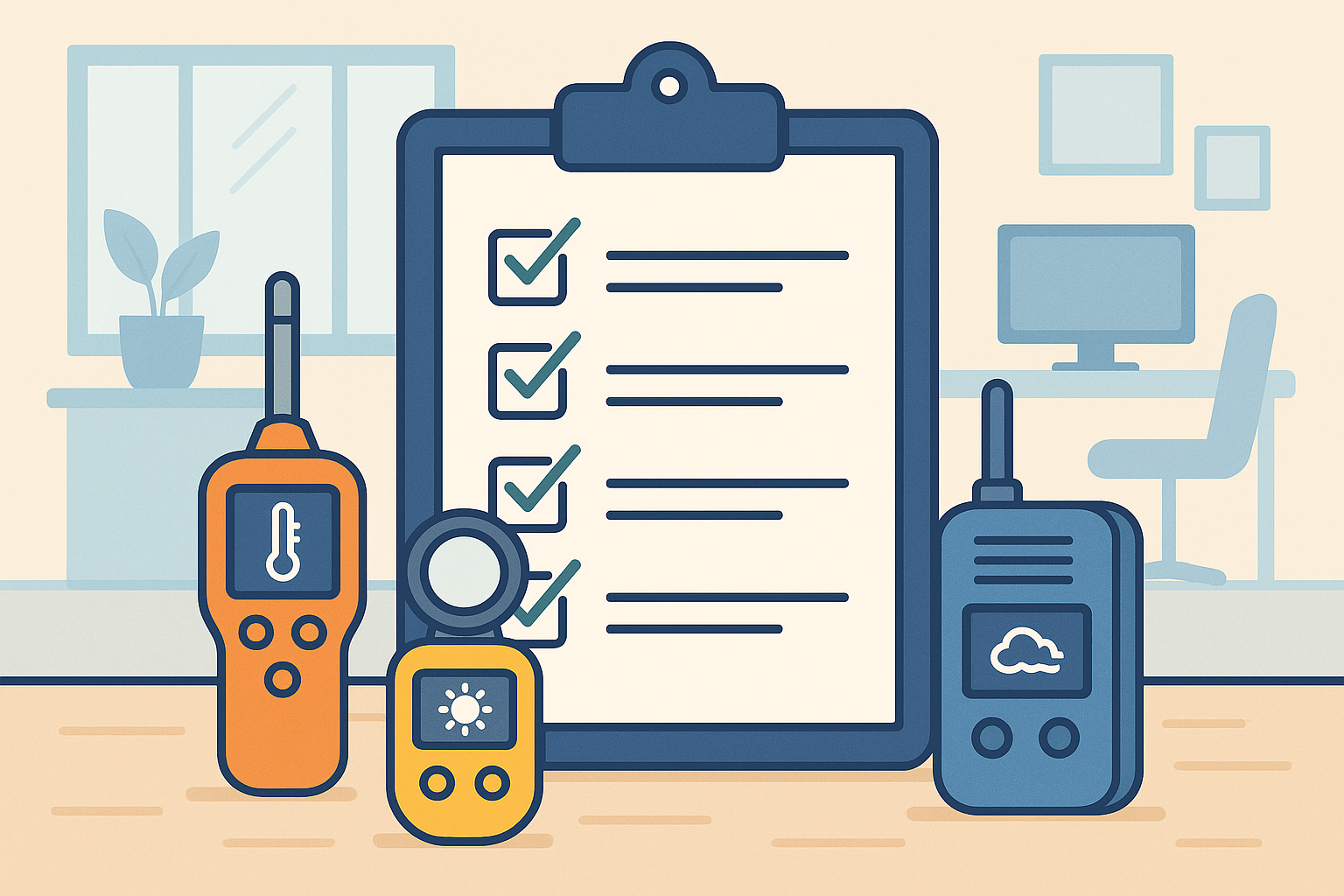
Your Simple Upgrade Plan
Instead of overwhelming yourself with a rigid program, try gradually adding metabolic boosters that prevent your body from adapting while building sustainable habits. This approach actually works long-term.
Start Here: Building Your Foundation
Get your basics dialed in before adding fancy stuff. This foundation phase sets you up for success without making you feel like you need to overhaul your entire life.
Foundation Steps:
- Set your workspace temperature to 68-70°F (or ask nicely if you don’t control it)
- Sit near a window or add a full-spectrum lamp if possible
- Set hourly reminders to just notice your posture
- Try basic deep breathing for 5 minutes, 3 times a day
Jennifer, a marketing manager, started her metabolic optimization journey by simply adjusting her office thermostat to 68°F and moving her desk near a window. Within the first week, she noticed feeling more alert and energized throughout the day. Her smartwatch showed a 5% increase in daily calorie burn without any other changes to her routine.
Level Up: Adding the Movement Factor
Once the basics feel natural, layer in conscious fidgeting and micro-exercises that boost your calorie burn without disrupting your workflow or making your coworkers think you’ve lost it.
Micromovement Ideas:
- Set hourly reminders for 30-second movement breaks
- Try desk-based exercises (glute squeezes, calf raises under your desk)
- Fidget guilt-free (foot tapping, finger exercises, pen clicking)
- Use a standing desk converter for 15-minute intervals if you have one
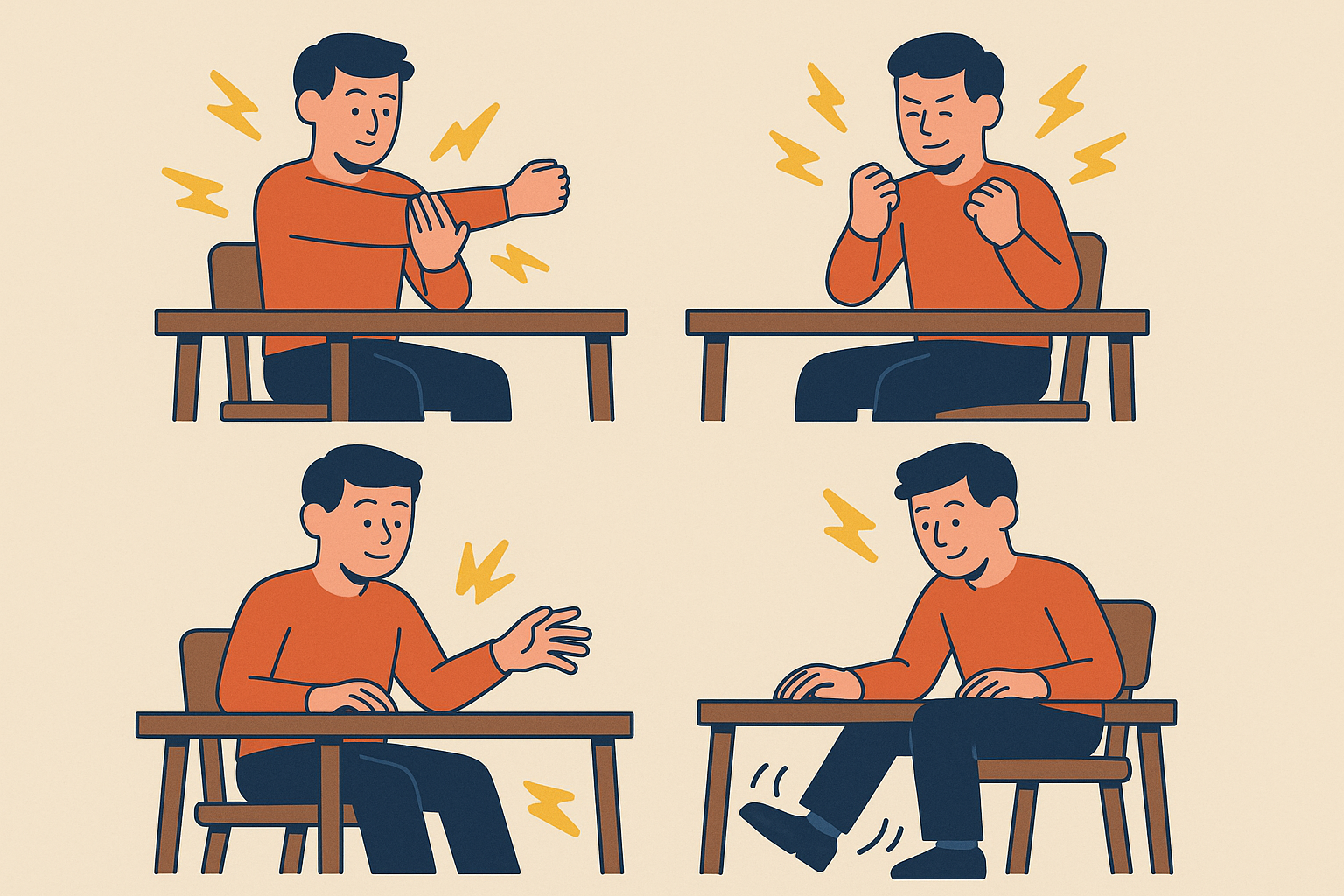
Advanced Stuff: For When You’re Ready
Once the simple stuff becomes habit, you can integrate more sophisticated techniques for maximum metabolic enhancement. These represent the cutting edge of sitting metabolism optimization.
Advanced Strategies:
- Try temperature cycling (vary your environment by 2 degrees hourly if possible)
- Practice box breathing during high-stress periods
- Use cold therapy (ice packs on neck/wrists for 5 minutes)
- Time your meals to support your natural metabolic peaks
Advanced metabolic optimization builds on foundational wellness principles, including 5 ways to biohack your way to better health that can amplify your sitting calorie burn through targeted interventions.
Obviously, what you eat matters too. I’m not going to pretend that fidgeting replaces a good diet, but when you’re ready to level up your overall health game, Organic Authority’s carefully curated selection of marine collagen and plant-based supplements can enhance the cellular health that underlies optimal metabolism while supporting the cognitive function that drives increased calorie burn during mental work. When you’re ready to take your metabolic optimization to the next level, explore our science-backed wellness solutions that work from the inside out.
Final Thoughts
Understanding how many calories you burn sitting isn’t just about the numbers – it’s about realizing that your body is constantly working, even during what feels like completely passive activities. The difference between someone who burns 1,200 calories sitting versus 2,000 calories comes down to small, manageable factors that add up throughout the day.
Your brain’s energy demands, unconscious movement patterns, environmental conditions, and simple interventions all play roles in determining your sitting metabolic rate. The cool part is that you don’t need to completely flip your lifestyle upside down to see real improvements in daily calorie burn.
Start with one or two things that feel most doable for your current situation. Maybe that’s adjusting your workspace temperature or practicing deeper breathing when you’re stressed. As these become second nature, you can add other optimizations that further boost your metabolic efficiency.
Look, I’m not saying you’ll drop 30 pounds just by breathing deeper (though some people do see real changes). But understanding this stuff has made me way less guilty about my desk job and way more aware of the little things that actually matter. Plus, it’s kind of cool knowing your brain is working out even when your legs aren’t.
Remember, every small change compounds over time. Those extra 200-300 calories burned daily through optimized sitting metabolism can equal real fat loss over a year without any additional formal exercise. That’s the power of understanding and working with your body’s natural processes instead of fighting against them.

